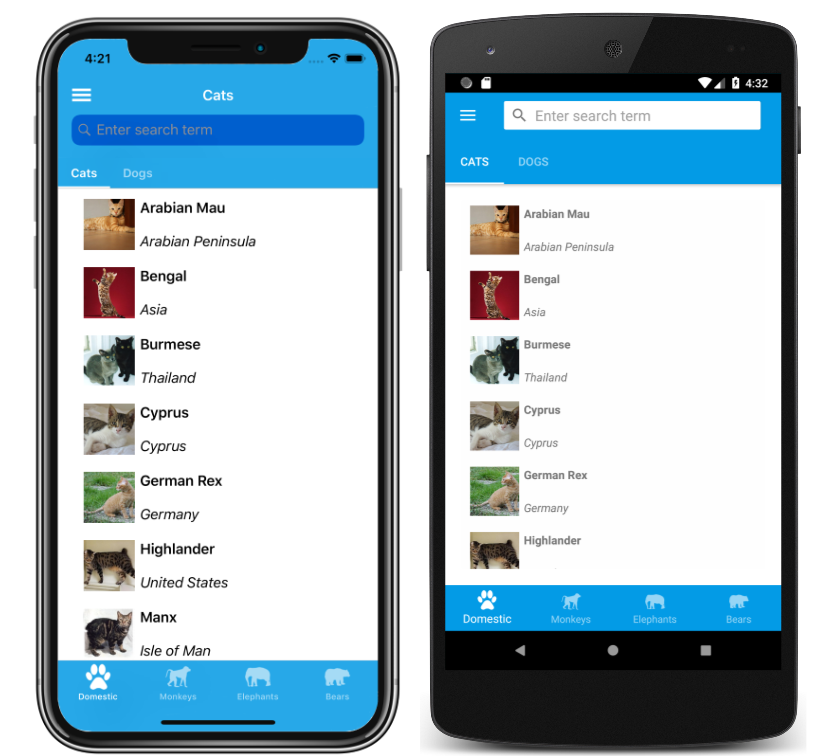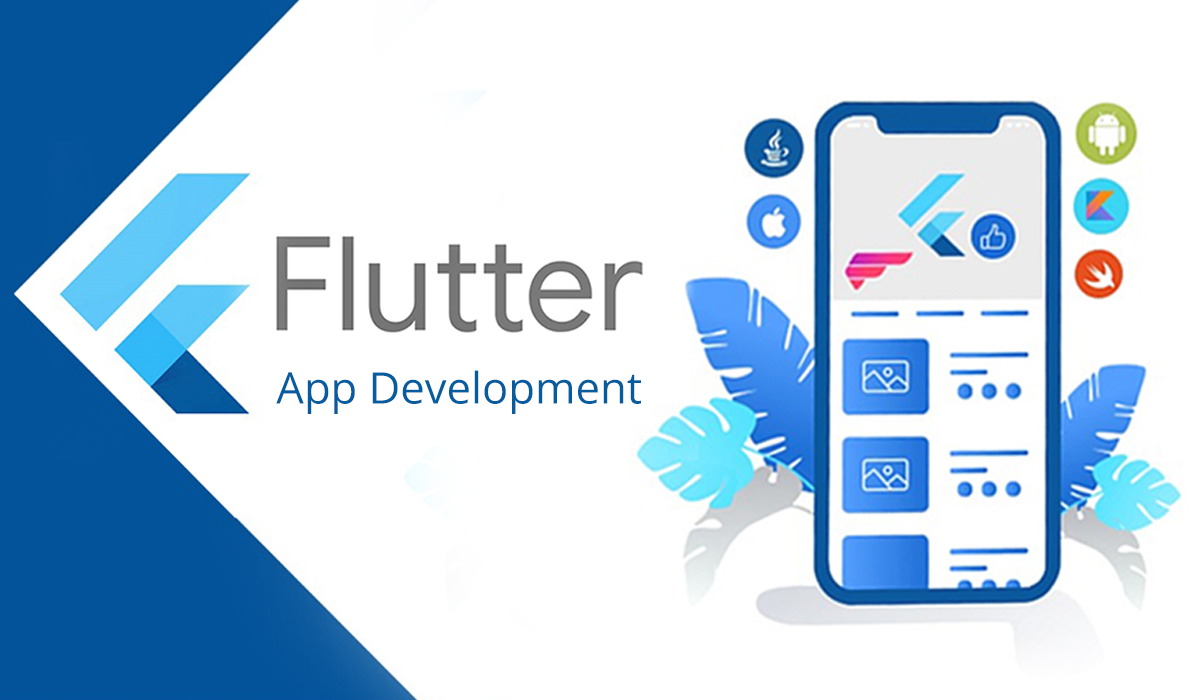
Skyrocketing Your Business with Custom Web Applications
With a focus on user-friendly design, seamless integrations, and robust security, our web applications empower your business to enhance productivity, engage customers, and stay ahead of the competition. Ready to transform your operations and boost your success? Contact us today to explore how our custom web solutions can drive your business forward!
Master1Tech builds tailored solutions using cutting-edge technologies like React, Node.js, and secure cloud hosting on AWS or Google Cloud.
Cross Platform Apps
Master1Tech excels in creating cross-platform apps with tools like Flutter, Xamarin, and Ionic, delivering seamless, high-performance solutions for iOS and Android that drive business growth for mid-size companies.
At Master1Tech, we craft custom cross-platform apps, working closely with you to deliver robust, feature-rich solutions tailored to your business needs. Our expertise ensures superior performance, enhanced features, and a client-centric approach for enterprises and startups alike.


Point Of Sale
Master1Tech is an excellent choice for implementing a point-of-service system with a React Native frontend due to its expertise in cross-platform mobile app development and robust backend integration.
Master1Tech's Perfected POS Implementation Steps
- Conduct stakeholder interviews with the boutique chain and grocery retailer to define needs: transaction processing, real-time inventory syncing, and customer rewards with personalized offers.
- Identify functional requirements: POS must handle payments, sync inventory across stores, and provide a cashier interface; loyalty app must track points, offer rewards, and deliver personalized promotions.
- Develop a Node.js (Express) back-end with endpoints for user registration, point tracking, and offer generation.
- Create a MongoDB schema for users, points (earned/spent), and offers, using aggregation pipelines for personalized offer calculations based on purchase history.
- Add logic to calculate points (e.g., 1 point per $1 spent) and generate offers (e.g., 10% off for 100 points).
- Selected Java (Spring Boot) for the back-end, PostgreSQL for the database, and React Native for the cashier mobile app.
- For the loyalty program app we chose Node.js (Express) for the back-end, MongoDB for the database, and Flutter for the mobile front-end.
- Used custom APIs for Stripe and PayPal for payment processing in the POS system; integrate with customer purchase data for loyalty point calculations.
- For the POS system: Integrate Stripe and PayPal APIs for payment processing, implementing secure transaction flows with tokenization and PCI DSS compliance.
- Add offline transaction support by caching transactions locally in the React Native app (using AsyncStorage) and syncing when connectivity is restored.
- For the loyalty app: Integrate with the POS system’s transaction data via a REST API to track purchases and award points in real-time.
- Set up cloud hosting: Use AWS for the POS system (EC2 for Java app, RDS for PostgreSQL) and Google Cloud for the loyalty app (Compute Engine for Node.js, Cloud MongoDB for the database).
- Configure development, staging, and production environments for both projects, using Docker for containerization.
- Establish version control with Git repositories for both projects, ensuring collaborative development workflows.
- Develop a React Native app for cashiers, featuring a dashboard for product scanning, payment processing, and transaction history.
- Implement a responsive UI with components for product selection, cart management, and payment confirmation, styled with React Native’s StyleSheet.
- Add offline capability by caching product data locally and syncing with the server when online
- Build a Spring Boot application to handle transaction processing, creating RESTful endpoints for payment processing, inventory updates, and cashier authentication.
- Design the PostgreSQL database schema: tables for transactions, inventory (products, stock levels), and cashiers, with indexes for fast querying.
- Implement real-time inventory syncing using PostgreSQL triggers to update stock levels across stores after each transaction.
- For the POS system: Set up PostgreSQL with stored procedures to handle transaction logging and inventory updates, ensuring data consistency with ACID transactions.
- For the loyalty app: Configure MongoDB with indexes on user and points collections for fast retrieval, using sharding to scale for a large customer base.
- Implement data migration scripts (using Java for POS, Node.js for loyalty app) to import legacy product and customer data into the new systems.

Mobile App Development
Master1Tech is a top choice for building mobile apps using Flutter due to their expertise in cross-platform development and enterprise solutions. Flutter’s single-codebase approach for iOS and Android ensures cost-efficient, high-performance apps, perfectly suited to Master1Tech’s scalable development practices.
Our Five Major Steps in Web Application Development

Planning and Requirements Gathering
Define the app’s purpose, target audience (e.g., iOS/Android users, retail customers), and core features (e.g., payment processing, user profiles).

Design and Prototyping
Design the user interface (UI) with a focus on user experience (UX), creating wireframes and mockups

Development
Faucibus vitae interdum amet neque sit. Molestie adipiscing bibendum phasellus eleifend libero velit velit habitasse risus

Integration
Integrate third-party services: add payment processing (e.g., Stripe API), push notifications (Firebase Cloud Messaging)

Testing, Deployment
Deploy the app: submit to app stores (Apple App Store, Google Play), ensuring compliance with guidelines
Master1Tech's Proven Mobile App Implementation Steps
- Purpose: Builds high-performance, cross-platform mobile apps for iOS and Android from a single Dart codebase.
- Why Chosen: Flutter’s native-like performance, rich UI capabilities, and enterprise adoption (e.g., BMW, Nubank) make it ideal for scalable apps. Its hot-reload and integration with enterprise systems align with Master1Tech’s cross-platform expertise.
- Role: Core development framework for the app’s user interface and logic.
- Purpose: Automates mobile app build, testing, and deployment to app stores.
- Why Chosen: Fastlane streamlines iOS and Android deployments, handling code signing and beta testing (e.g., via TestFlight), which is critical for large teams managing frequent updates and compliance with app store policies.
- Role: Manages CI/CD pipelines and app store submissions.
- Purpose: Provides real-time database, authentication, cloud functions, and analytics for mobile app backends.
- Why Chosen: Firebase’s scalability, seamless Flutter integration, and enterprise features (e.g., SOC 2 compliance, real-time analytics) support large user bases and secure data management, complementing Master1Tech’s backend capabilities.
- Role: Handles server-side logic, user management, and analytics.
- Purpose: Collaborative design tool for creating and prototyping mobile app interfaces.
- Why Chosen: Figma’s cloud-based collaboration and developer handoff features ensure consistent, enterprise-grade UI/UX, aligning Flutter’s pixel-perfect rendering with corporate branding and user expectations.
- Role: Designs and prototypes the app’s interface before development.
- Purpose: Robust relational database for structured, secure data storage.
- Why Chosen: PostgreSQL’s scalability, ACID compliance, and support for enterprise integrations (e.g., Oracle NetSuite, SAP) make it perfect for complex, compliant mobile apps. It pairs well with Firebase for structured data needs.
- Role: Stores and manages enterprise data, such as transactions or user profiles.
- Purpose: Scans code and dependencies for vulnerabilities, ensuring compliance.
- Why Chosen: Snyk’s focus on mobile app security and integration with Flutter’s Dart ecosystem ensures enterprise-grade protection (e.g., GDPR, HIPAA), vital for larger companies handling sensitive data.
- Role: Secures the app against vulnerabilities and ensures regulatory compliance.
- Build a Spring Boot application to handle transaction processing, creating RESTful endpoints for payment processing, inventory updates, and cashier authentication.
- Design the PostgreSQL database schema: tables for transactions, inventory (products, stock levels), and cashiers, with indexes for fast querying.
- Implement real-time inventory syncing using PostgreSQL triggers to update stock levels across stores after each transaction.
- For the POS system: Set up PostgreSQL with stored procedures to handle transaction logging and inventory updates, ensuring data consistency with ACID transactions.
- For the loyalty app: Configure MongoDB with indexes on user and points collections for fast retrieval, using sharding to scale for a large customer base.
- Implement data migration scripts (using Java for POS, Node.js for loyalty app) to import legacy product and customer data into the new systems.










